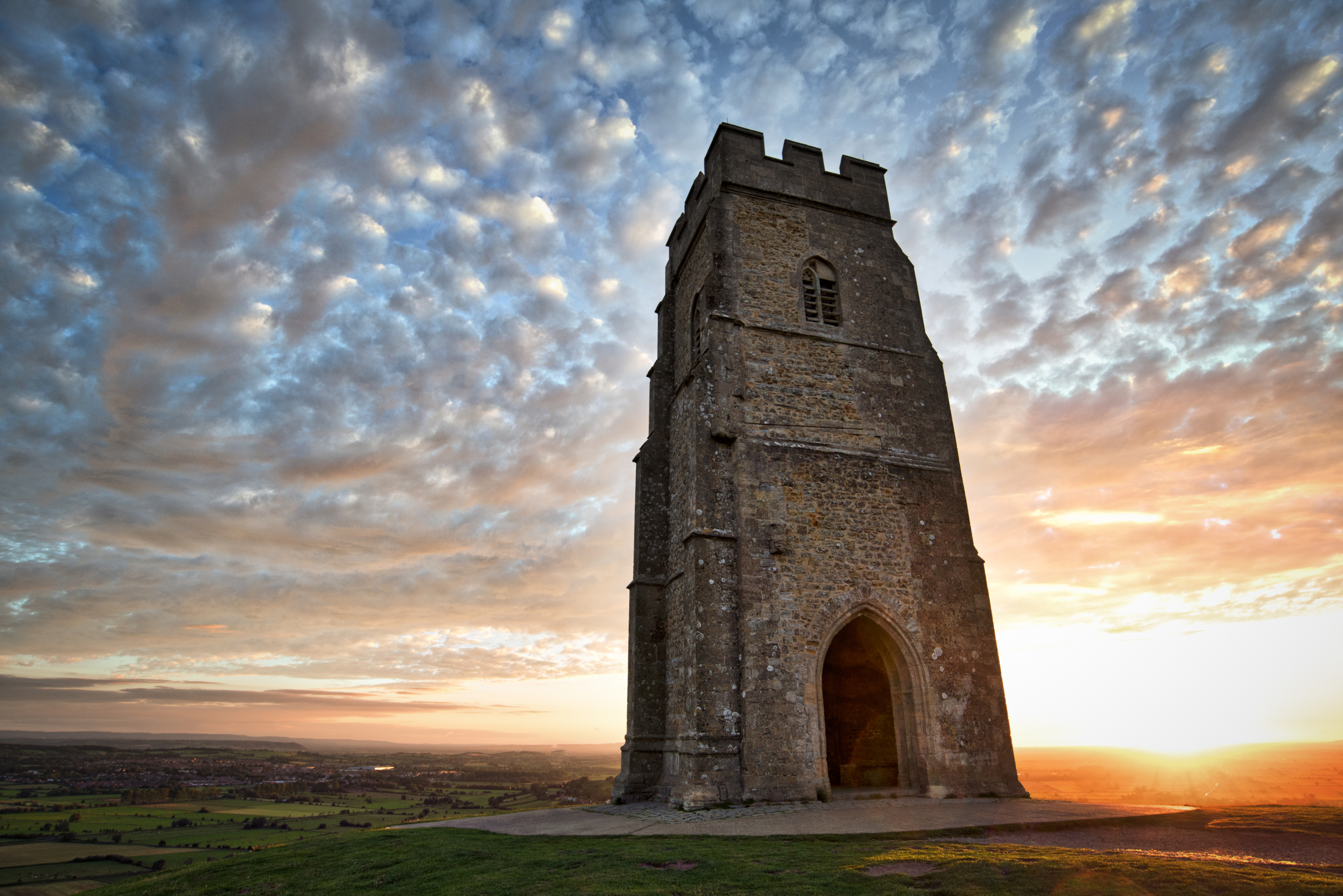

The top of the tor is accessed by two paths, one approaching along the less steep but longer western crest, the other climbing the steeper east face. The sides are crossed by seven concentric terraces, approximately equal in height, and of uncertain origin - they may be entirely natural features, associated with bedding planes of the limestone, or be artificial, made perhaps for agriculture, defence, or even as part of a maze, guiding pilgrims to the summit. The relatively soft limestone that makes up the majority of the tor is protected from erosion by a cap of harder sandstone, from the Bridport Sand Formation. The church was closed in 1539 as part of the Dissolution of the Monasteries, and all was quickly demolished and the stones re-used elsewhere, except for the three-storey tower which has survived ever since, subject to only limited restorations.

Several buildings have been constructed on the summit, the most recent being a sandstone church, part of a small monastery associated with the much larger institution of Glastonbury Abbey. An ancient dyke, Ponter's Ball, crosses a belt of slightly higher land on the southeast side of the tor, protecting what would have been the only overland approach.

The tor lies at the centre of the Isle of Avalon of Arthurian legend, supposedly site of the king's final days following the Battle of Camlann, and location of the forge that created the sword Excalibur. The tor is 518 feet high (158 metres), about a third of a mile long, and is part of a larger elevated area ( Stone Down) up to 2 miles across, the west side of which is occupied by Glastonbury town - all is encircled by the low, marshy plains, only around 20 feet above sea level and much prone to flooding the land has been reclaimed and partially drained over the centuries but in Anglo-Saxon times most was covered by semi-permanent water, giving the hill the appearance of an island. Like another of the hills, Burrow Mump, the peak is topped by the remains of an ancient church, dedicated to St Michael, and the combination of the stark ruin, the far-reaching views and the mythical and spiritual influences of the area make this a particularly popular and oft-visited location. Glastonbury Tor is the most famous of over a dozen steep-sided hills that rise above the flatlands of the Somerset Levels, mostly formed of limestone similar to but later than the Mendip Hills to the north.


 0 kommentar(er)
0 kommentar(er)
